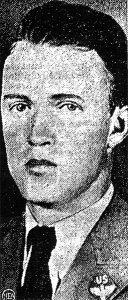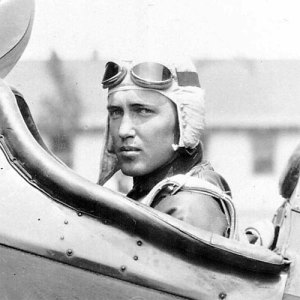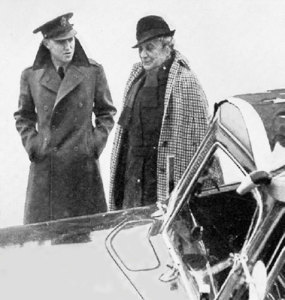Flags at graduation and for first victim of WWII

Over the four years of the Second World War, hundreds of thousands of U.S. servicemen were killed. Their bodies and coffins were covered with American flags, and Old Glory waved over cemeteries from New Guinea to France.
But the first casualty, who was killed by a Nazi bomb, occurred nearly two years before Pearl Harbor was attacked and America entered the war.
The story of Robert Losey begins with his graduation from West Point in 1929. The class of 229 members ended its time in college with much ceremony, including a regimental parade, American flags and the Academy’s crest, created in 1898. The crest appears on banners and flags.

Losey transferred to the Air Corps and, based in Washington, D.C., became an expert in aeronautics and meteorology. In January 1940, he was appointed assistant military attaché in Helsinki, Finland, where he reported on Russia’s invasion there.
He soon found himself trapped in a war. Germany had invaded Poland in September 1939 and attacked other nations in 1940, including Sweden and Norway. President Franklin Roosevelt asserted that the incursion was “an unlawful exercise of force” and added that “if civilization is to survive, the rights of smaller nations…must be respected.”

Next, Losey was ordered to protect American officials in Scandinavia and guide them to safety. To make sure enemy airplanes knew who they were, he placed an American flag on the roof of his staff car. Nonetheless, he and his charges got caught in a German air attack on Norway. On April 21, 1940, as they ran for protection, a metal shard from one of the bombs pierced his heart, killing him instantly.
Thus, he became, as newspapers reported, “the first American casualty of the war,” a conflict the U.S. wouldn’t officially enter for 20 months. In Stockholm, a funeral service, attended by diplomats, was held for Losey, 31. “The coffin was covered with an American flag,” the United Press reported.
Germany’s air minister, Hermann Goering, offered regrets to the U.S. government, saying his pilots didn’t know Americans were within range of their bombing, despite the flag-draped auto.
When Losey’s wife, Kay, was informed of his death, she bravely said, “It’s war. I guess you must expect almost anything.” Then she collapsed.
A month later, her husband’s remains were returned to the U.S. He was buried in the cemetery at West Point after a flag-bedecked service in the Academy chapel.
